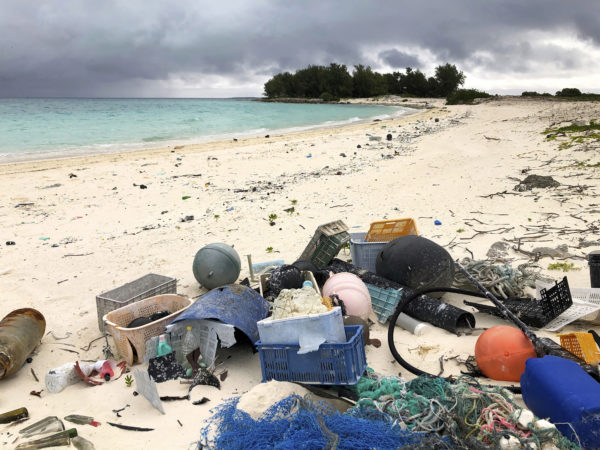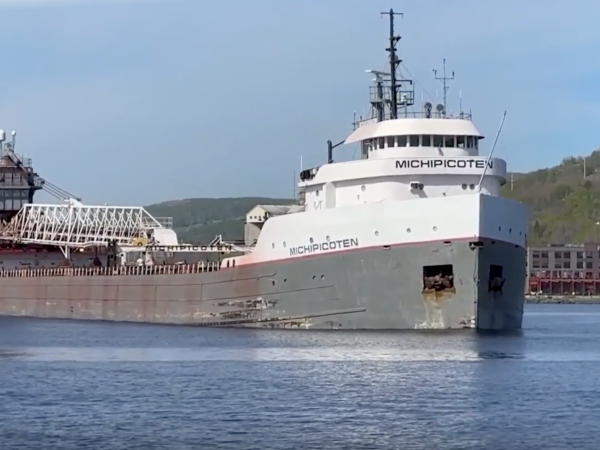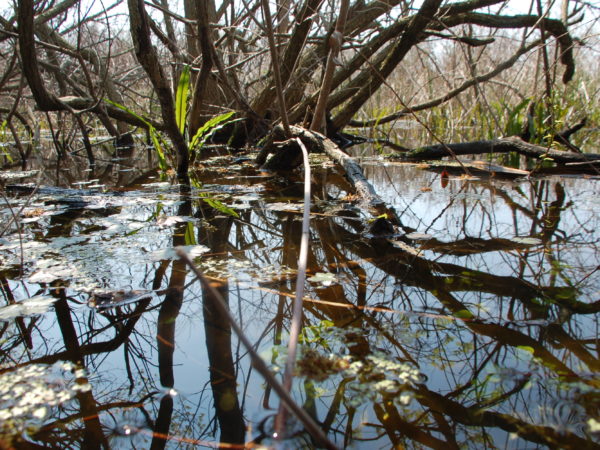
By Katie Thoresen, WXPR
This story was originally published by WXPR. WXPR is a community-licensed public radio station serving north central Wisconsin and adjacent areas of Michigan’s Upper Peninsula. Listen to their stories here.
Rhinelander has gotten about 37 inches of snow so far this year. That’s more than a foot less than normal for this time of year.
But it’s not just the amount of snow that’s different, it’s the quality.
We’ve seen a lot of the light, fluffy snow this winter. We’ve not been getting those heavy, wet snowfalls.
“We started off too warm for snow, and then we ended up too cold to make heavy, wet snow, so that’s why we haven’t really seen it in the area this year,” said Timm Uhlmann, a meteorologist with the National Weather Service Green Bay.
To get heavy snow, Uhlmann explains you need a couple things.
One is the temperature needs to be close to, but still below freezing. Then there needs to be liquid mixing with the snow to create larger snowflakes.
Uhlmann says the transition from an El Niño to La Niña weather pattern at the beginning of winter could be partially to blame.
“We get flow out of Canada. So that involves some drier air and the jet stream kind of bringing in things from the northwest. As a result of that, you also oftentimes will see fewer of the bigger cyclones that develop on the back, on the lee side of the Rockies that sometimes lift into the Great Lakes area,” said Uhlmann. “So this year, we so far haven’t seen a system like that. Oftentimes those are the ones that make a lot of the widespread, heavy and often wetter snow, because they have access to that warmth and moisture from the Gulf.”
While the lighter snow certainly makes it easier on people’s back while shoveling, it can impact local trails.
“Powder is great fun to play around and for skiing, but unfortunately, it’s not conducive to good grooming for either silent or motorized sports, because it has too much air into it and not enough structure in the snow to really pack in well, so it’s been a challenge,” said Joel Knutson.
Knutson is a trail groomer mostly for Cassian Cross Country Ski Trails maintained by the Rhinelander Area Silent Sport Association.
He says another challenge with the light snow is wind.
“We’ve had so many windy days as well, and really dry, fluffy powder snow is susceptible to getting blown around,” said Knutson. “Even if you’re just kind of driving down Highway 8, you’ll see hillsides that have been completely scoured there, which is, you’re like, well, there should be enough snow to hold but there’s nothing really holding it together.”
While it’s not ideal conditions, Knutson says he and many other skiers are grateful to be getting any snow after last winter and the beginning of this one.
“Everyone is kind of in a take what you can get kind of boat. To be honest, I think given the challenges, they [the trails] have turned out better than we might have expected,” said Knutson. “One advantage to a lot of the cold that we’ve had recently, is what we have been able to pound down has really had a chance to set really hard, so it’s got maybe a little bit more durable base than you might expect.”
Knutson says trails are in fair to good condition. He said this warm up could actually help if it doesn’t get too warm, too fast and there’s decent snowfall after it.
Uhlmann says looking ahead after the warm up, temperatures look to trend below normal as we get into the second week of March.
“The winter isn’t over, so there certainly is still the potential,” said Uhlmann. “A lot of the times each year we will see some heavier, wetter snow as we get into the spring especially, just because that daytime temperature gets closer to freezing.”
Catch more news at Great Lakes Now:
Study finds winter days on the Great Lakes growing shorter due to climate change
Featured image: Katie Thoresen/WXPR




